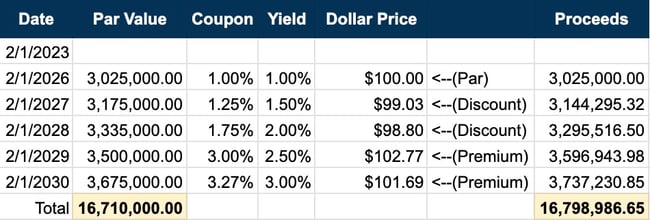What is Premium/Discount?
Understanding the differences between premium and discount bonds can help investors make informed decisions that align with their financial goals. This guide will explore how these bonds work, provide tips for investing, and clarify their unique characteristics.
When bonds are originally issued, they are sold as par, premium, or discount bonds. A bond’s par value is the same as its face value, which is the amount the bond issuer will pay to investors when the bond premium reaches maturity. Research fundamental elements of bond-level basics to better understand their usage.
What are Premium Bonds?
Premium bonds are those sold above their face value. Investors pay a higher bond price, often due to a higher coupon rate compared to the market interest rate. For instance, an investor might pay $125 for a premium bond with a face value of $100. This setup allows investors to benefit from higher interest payments than the prevailing yields available in the market.
Investing in premium municipal bonds can also provide tax advantages, as the interest earned may be exempt from federal taxes. Understanding how the bond premium works is essential, as it may require an investor to account for the accrued interest when trading these bonds. Find more information regarding bond amortization methodology to supplement your knowledge.
What are Discount Bonds?
Discount bonds are bonds sold at a price below their face value. For example, an investor might purchase a discount bond for $85 when its par bond value is $100. These bonds are particularly appealing during times of higher interest because they can yield a substantial return if held until maturity.
When buying discount municipal bonds, investors should be aware of how the bond discount is amortized over time, affecting the interest expense reported.
The chart below shows a bond issuance with five maturities that are sold as either par bonds (2026), discount bonds (2027, 2028), or premium bonds (2029, 2030):


Example:
Suppose an agency needs $1,000,000 to fund maintenance expenses. To fund the expense, the agency plans to sell 10-year bonds with a face value of $1,000,000 at a coupon rate of 3.00% to yield approximately 4.24%. In the current market, based on the coupon and yield, the bond prices would be $90 per $100 face value (i.e., a discount bond), producing only $900,000.
Since the agency needs $1,000,000, they will actually have to sell $1,115,000 of face value of bonds to offset the discount on the bonds in order to receive $1,000,000 in cash to fund the expense.
How to Invest in Premium and Discount Bonds
Investing in premium and discount bonds can be an excellent strategy for generating income and diversifying your bond portfolio. Understanding the differences between these bonds is crucial for making informed investment decisions.
Investors should consider the market interest rate when purchasing bonds. A discount bond typically offers a lower bond price than its par bond value. Conversely, a premium bond sells for a higher price, often associated with a higher coupon rate compared to prevailing market rate.
What’s Important Here?
Bonds are sold as either par, premium, or discount bonds. Whether a bond is issued as a par, premium, or discount bond depends on the coupon rate of the bond compared to what the yield on the bond is. With DebtBook’s government accounting software, you gain a comprehensive platform for managing your bond portfolio, ensuring accurate reporting and compliance. DebtBook helps organizations streamline bond management, providing clear insights into how each type of bond fits within your financial strategy.

